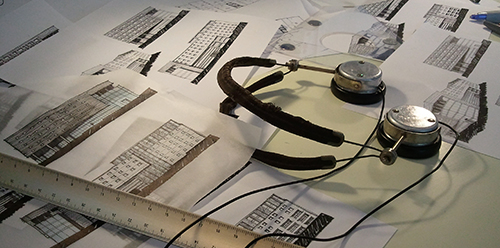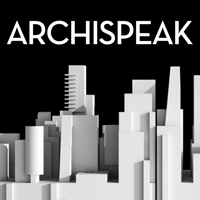Questions, schmestions.
A good friend of mine, Bob runs a little blog that focuses on what it’s like to be an architect. In a recent post he asked various architects to answer the same questions he is most asked in order to provide multiple glimpses into the profession. Here’s my offering.
What kind of projects were you doing when you first started as an architect?
I started at a small firm of 11 people. I had 3 jobs offers when I left college in 1998, one was from a 3-piece-suit clad, large company that mostly did large community churches, another a really small general practitioner (a firm that was just he an his partner) who interviewed me in a Godspell t-shirt amidst a paint splattered studio in a converted restaurant. The third was a really nice man named Irv who’s firm focused on golf course clubhouses. I chose the third.
It was a great job. I was exposed to an easily digestible commercial product type that gave me an opportunity to wrap my brain around all aspects of the profession from design, project management, marketing, etc. I was really worried about getting lost in the mix at a big firm, and I’ve always been the sort to be a jack-of-all-trades and the small firm needed me in a myriad of capacities, and offered many opportunities for me to take the initiative and shape my career.
It also became apparent, about 1 1/2 years into my time there, that I needed more experience than this single product type if I was going to develop as an architect and have any hope of passing my exams, so I moved on to a much larger firm. I loved my time there, but I needed to evolve professionally.
At what point did you see the company you worked for trusting you with more responsibilities in the company?
This is a loaded question. It’s been my experience that you never trust anyone implicitly. Architecture is a team sport, we all are checks for one another. There is only one person signing the drawings at the end of the day, and it is their own personal, and professional liability they are attaching to those drawings. If anyone is looking to act with carte blanche in a firm, they had better be the owner. I expect the managers I coordinate to check the work of their team members, just as I check their work, and just as the partner in charge checks mine. What happens then, increasing trust comes when I review the work of others and find fewer and fewer issues. It’s literally that simple.
In a larger sense, real trust needs to be earned in how you act in front of a client. When I interview people, one thing I have in my mind when I size them up is the simple question “Can I put this person in front of a client?” That is the primary benchmark for excelling at a firm. You have to be able to handle that situation without upsetting the client, rocking the boat, over committing, or doing anything other that leaving the client with the impression that you are professional, competent, and able to delivery beyond their expectations.
How many projects can you expect to be working on at once?
As I’m writing this I have 2 projects in Schematic Design, 1 in Design Development, 6 in Construction Documents, and 3 under construction so 12 total. That’s pretty typical.
How often did/do you work in a team?
Always. Our projects are quite often +/-350,000 SF mixed-use urban redevelopments and as such, would be impossible to complete alone. The schematic design phase is usually smaller, often myself, the partner in charge, and a junior designer, but then the teams blossom to more.
How important is an innovative mind to the company?
Innovation is very important, but when it’s a response to a problem. We don’t need innovation for innovation’s sake. Find a way to streamline the production of stair details, devise a rendering style that communicates the design in half the time, find a way to increase a building’s efficiency and reduce the necessary square footage saving the client millions, pioneer a design the communicates the client’s branding message in a way that they could never have imagined – that is how you innovate.
What key things do you look for in potential new hires?
A true and honest commitment to doing what is right and deliver the best product they possibly can. Staying focused, working hard, putting in overtime, all of this should be driven by the individual’s commitment to their work and their architecture.
How important is diversity to your company?
Diversity is critical because in the team atmosphere, the broader experiences we can bring to the table, the better the product. We like to hire people from all over the country and all over the world. We have team members that represent Russia, Israel, Indonesia, China, Mexico, Germany, and dozens of different US states and universities. You can’t replace experience.
How big of a role does HR play in your company?
This is a curious question. HR is important to any company, and I don’t think any more or less so at an architecture firm.
Would you say Architecture is a field for everyone?
No. Just like not everyone is right for law or medicine or accounting or coding. You must have a passion for it and the ability to spatially problem solve in a way that not everyone can. That doesn’t mean everyone can’t have a passion for it. I love paintings, but I can’t paint.
What is the best asset in your company?
Our teamwork. I know when I hit the wall with a design, or need help solving a problem we can circle up and push through as a group. We are each one anothers redundancy, and each others partners.
Describe your best employee in one word
Dependable.
What style architecture do you love most?
What a dreadful question. I like good design. That might be “deconstructivist” or “Georgian” are any number of monikers we place on a design to help design, classify, label and categorize a building. Every “style” has good examples and bad examples, and by way of this, is a level of data that is frankly pretty worthless. Good architecture should solve the problems presented it by being of it’s time, of it’s place, and transcend stylisms.
Cheers.
Bob Borson – Life of an Architect (twitter @bobborson) “Being an Architect”
Brian Paletz – The Emerging Architect (twitter @bpaletz) “Architects talk #Architalks. Wait… What?”
Marica McKeel – Studio MM (twitter @ArchitectMM) “Q+A with a Small Firm Architect”
Jes Stafford – Modus Operandi Design (twitter @modarchitect “Ask the Architect”
Enoch Sears – Business of Architecture (twitter @enochsears) “Life as an Architect”
Mark R. LePage – Entrepreneur Architect (twitter @EntreArchitect) “My Answers to 11 Big Questions About Architecture”
Jeff Echols – Architect of the Internet (twitter @Jeff_Echols) “11 Frequently Asked Questions About Being an Architect”
Evan Troxel – Evan Troxel (twitter @etroxel) “Eleven Questions about Architecture”
Andrew Hawkins – Hawkins Architecture (twitter @HawkinsArch) “Being an Architect: Questions Answered”



